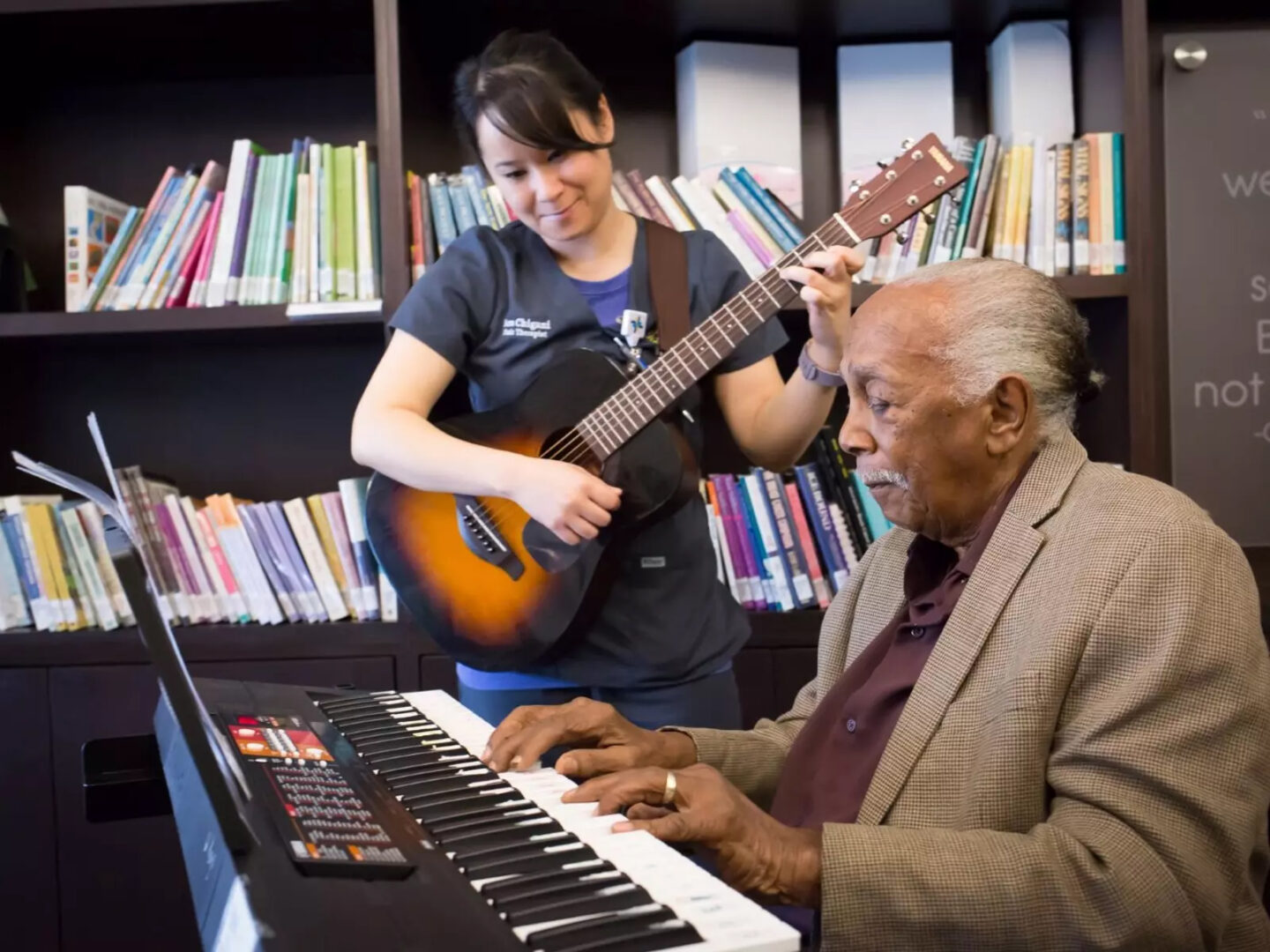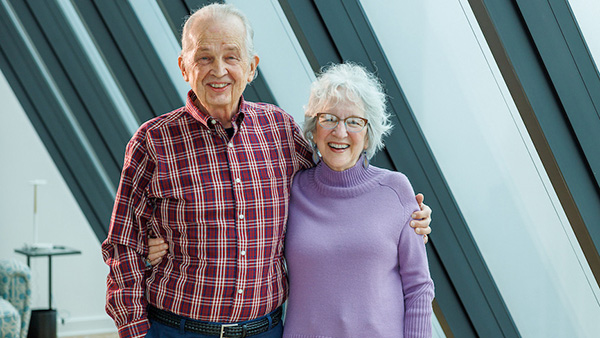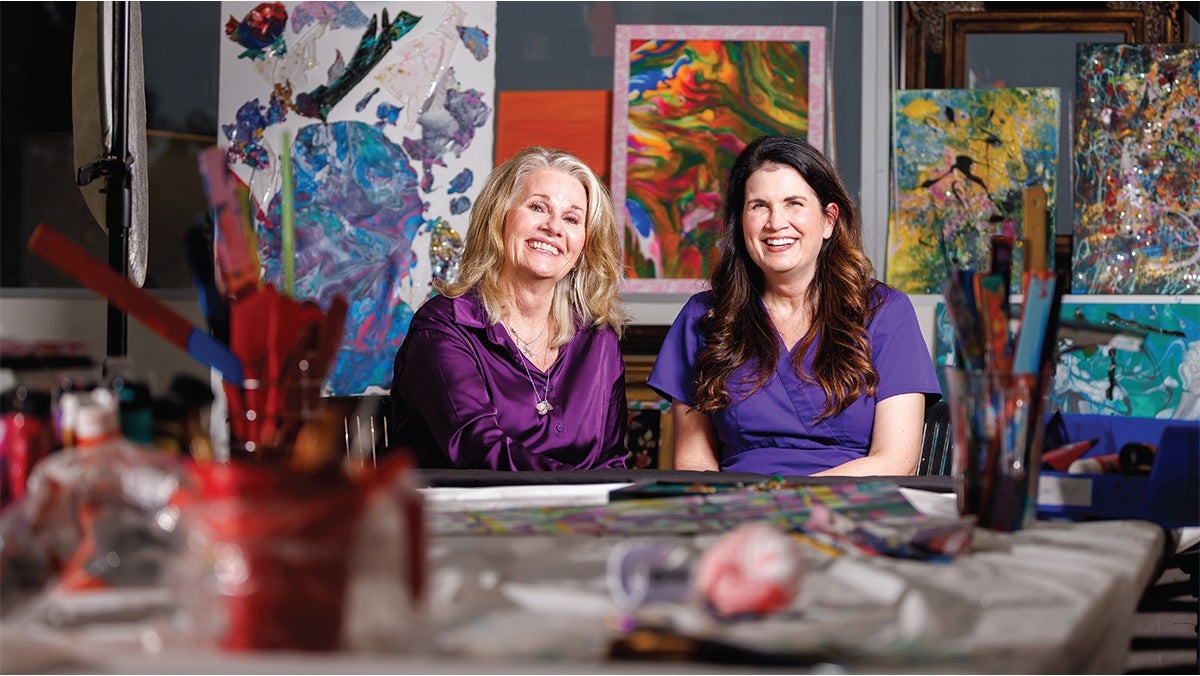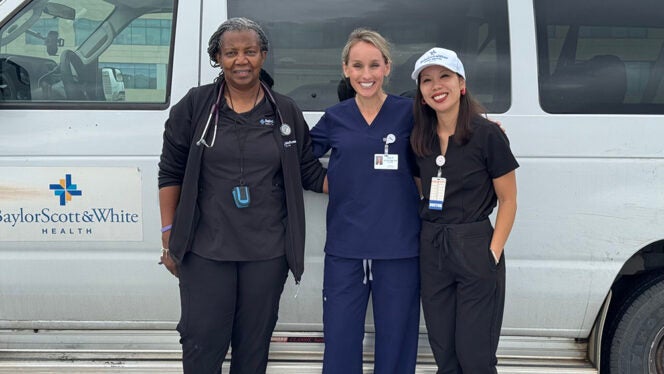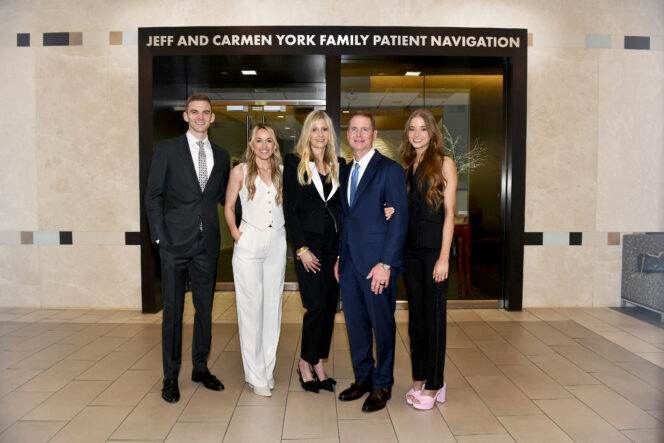In this Article
From art to music to Child Life Services, Baylor Scott & White’s holistic approach to healing focuses on the body, mind and soul.
In this Article
There is an art to medicine, as a great complement to the science, compassion and excellence that patients seek at Baylor Scott & White Health. To carry out its Mission of promoting the well-being of all individuals, families and communities, the largest not-for-profit health system in Texas also has a program focused on art in medicine.
From providing care through music and art to offering specialized services for the youngest family members, Baylor Scott & White has integrated care for body, mind and spirit. These programs are the result of generous philanthropy. Recent gifts of $750,000 for Arts in Medicine and $400,000 for Child Life Services underscore the importance of these efforts, which benefit patients and families long after they’ve left the hospital environment.
“These programs impact not just patients and their families but also support our hospital team members. The research validating these services is compelling, as they bridge science and humanity, fostering healing in ways that reach beyond medicine,” said Amy Wilson, MD, chief medical officer at Baylor University Medical Center (BUMC). “I am grateful for the philanthropic investment in our holistic healthcare approach that embraces both the science and art of healing.”
Arts in Medicine
Battling cancer seems to touch every cell in your body. As a nurse, Susan knows this journey on a scientific level—and as a cancer survivor, it’s also personal. Through her own journey, Susan is a testament to how the arts can impact a critical disease process. Today, she supports a creative arts team as practice administrator, Arts in Medicine at Baylor Scott & White. Their mission is to promote well-being, enhance care and support holistic patient needs by integrating arts into the healing process.
Baylor Scott & White launched its Arts in Medicine program at BUMC in 2015 to support patients, families and staff as they navigate life-defining health challenges. Research has shown that integrating arts into clinical settings improves quality of care and leads to greater healing
as well as workplace satisfaction. Benefits include fewer complications and the need for less medication. “We deal with modalities that have nothing to do with medicine but everything to do with healing,” Susan said.
Music therapy
Music therapy has enhanced care for hundreds of patients and caregivers by lifting their spirits, calming them and assisting them through the emotional process that can come with a health battle. Patients may sing, play an instrument or simply listen as music therapists engage with them through music.
“If you walk into a person’s room who is anxious as can be, and you begin to strum a guitar, the impact of the sound wave, the frequency, from the guitar to the person’s ears, can help lower their blood pressure, even out their breathing and reduce their pain level,” Susan said. Multiple studies on music therapy’s effectiveness show improvements in mood—specifically in the reduction of depression and anxiety—and improved emotional expression, communication and quality of life.
The tiniest patients at Baylor Scott & White also benefit from music therapy, with a new NICU Music Therapy program that has delivered more than 500 sessions for these patients and their caregivers. Research shows that music can benefit babies in the NICU, helping to improve infant/mother bonding, feeding and neurological development. Music also helps settle infants during tests like eye exams, keeping the babies calm so the exams can be completed faster, meaning less stress for the little ones.
Healing through art
Baylor Scott & White’s Arts in Medicine program stands out for its ability to feature art therapy in addition to music. Art therapists have provided hundreds of counseling sessions through one-on-one support, group sessions and in open art studio time, where patients may draw, paint or explore other creative materials while therapists engage with the patient and help them emotionally process their health and wellness journey.
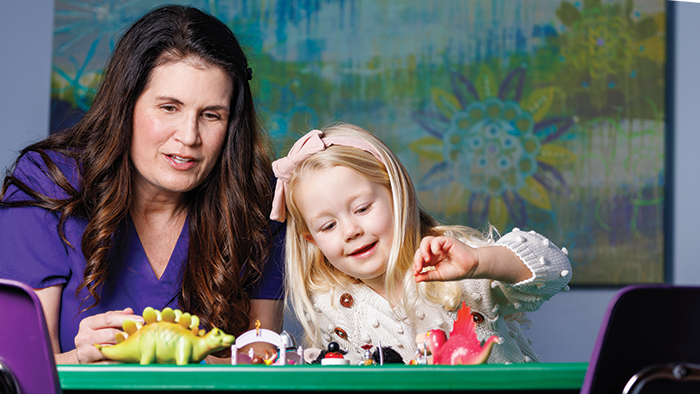
Studies show that art therapy helps patients manage emotions, increase self-awareness and self-worth, and decrease anxiety and stress. Patients and caregivers can learn coping strategies that last well beyond the hospital experience.
“The impact of this program reaches people far beyond their physical health crisis, to help them recover wholeness,” Susan said, which would not be possible without philanthropy. Arts in Medicine initiatives rely 100% on donor support.
A lifetime of difference
Cinda McDonald, director of Palliative Care Child Life Services at Baylor Scott & White leads a program with a mission that is simple yet profound: to lessen short-and long-term negative effects a family member’s serious medical condition or death can have on a child.
Cinda has worked with hundreds of families and children, including a family whose matriarch was battling breast cancer. Cinda provided child life services to help explain the hospital experience for the patient’s young son, answer his questions in an age-appropriate manner and support his needs while his mom battled cancer.
“Years after she had healed and this family had moved on, the mom sent me a note with a journal entry her son had recently written,” Cinda said. “He had written about ‘this lady who helped him to understand what happens in cancer therapy’—and that was six years ago!”
The goal is to provide care that will help the child today, tomorrow and years down the road.
“The long-term education is important,” Cinda said. “We need to help the adults—parents, grandparents, custodial parents—understand this is not a moment in time for kids. As children mature and develop, this loss impacts them in a new way.”
Children also experience health crises in a way that can confound adults, who experience the situation through an adult mindset. Children often have thoughts and questions that are the result of their limited life experiences, combined with imagination: Because my dad was playing basketball with me, did I cause his pneumonia? Will I catch my mom’s cancer if I hug her?
“Children still let their imagination in, and that’s what we want—but we have to step in and give them factual information in an age-appropriate way so they can understand the truth of it,” Cinda said.
Adults need to be prepared to support children as they experience the loss in different ways as they grow, Cinda emphasizes: “If we don’t, it increases risky behavior and suicidal actions, even involvement in crime,” she said. “Research has shown this potential for children who have experienced a substantial loss in childhood.” Interventions from trained professionals like those in the Child Life Services program at a crisis point can drastically change that child’s trajectory and positively impact the whole family.
Baylor Scott & White’s program was one of the first in the country dedicated to supporting children of adult patients and exists entirely thanks to the generosity of donors. This support is offered at no cost to families, and the services are not reimbursable through private insurance or Medicaid. Since the program’s start in 2011, more than 23,000 children have been served.
Cinda speaks passionately about the patients she and her team of Child Life specialists help. When asked how this program impacts young lives, she tears up and points to a plaque her fellow Child Life specialists gifted her that reads: “When you touch a child’s life, you’ve touched an entire lifetime.”

